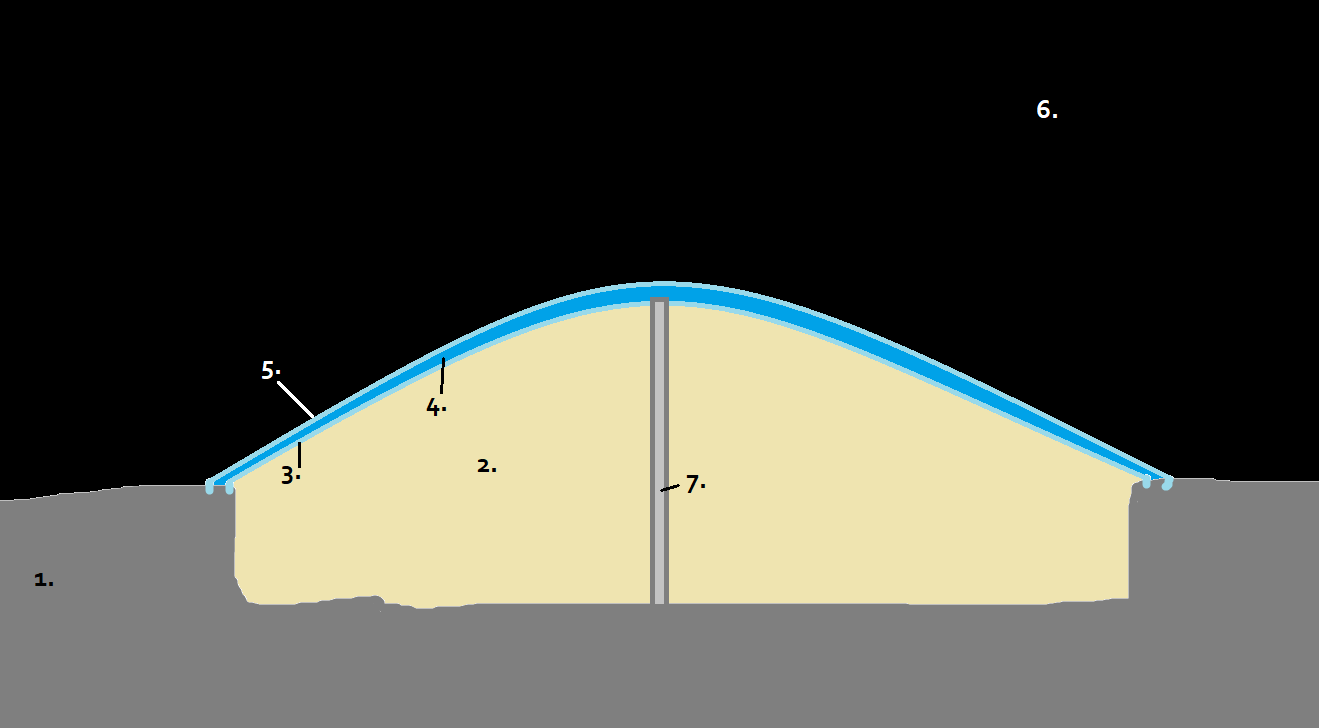I have an idea for a space habitat [edit: as in, a habitat on another planet or moon, not in open space, apologies for any confusion!] which consists of two concentric domes made of tough, transparent material, with about 1 metre gap between filled with water. This serves as the habitat's reservoir of drinkable and usable water, and doubles up to help shield the colony from radiation.
My question is how this set-up would fare against a micro-meteorite strike, the kind that might pierce the domes with holes between 1-5cm in diameter. My intuition is that the atmospheric pressure within the interior dome will be more or less maintained following the impact, as while the water starts to sublimate out of the outer dome and leak through the inner dome, the air from the interior is kept from rushing out by the leaking water acting as a plug.
Would this work, or am I misunderstanding how water would behave in this situation? Would this work significantly differently on an environment like the moon with almost no atmosphere whatsoever versus an environment like Mars with a present but very thin atmosphere? For the sake of this query, we can assume that the materials used are sturdy enough and constructed in such a way as to not shatter or buckle when struck with minor projectiles (though I'd accept there'd be an upper limit where if this was struck by a more macro meteorite the thing would just break apart).
If water is a no-go for this concept, are there alternative fluids that would work? Another idea I had was if the water was treated with a gelatin-like concentrate that greatly increased its viscosity.
EDIT: Adding a diagram for clarity:
- The planetary surface, with the habitat potentially built within a natural impact crater.
- The habitable environment within the domes.
- The inner dome (this may include an integrated heating element to keep the water from freezing over).
- The water (or other appropriate fluid).
- The outer dome.
- The exterior environment (think Moon- or Mars-like).
- Pump/water treatment mechanism. This takes water that is mined from the surface and water that has been recycled from previous use, adds any substances that may need to be mixed into the water, then pumps up into the inter-dome layer. Water is removed from the base of the dome as and when it is needed.

